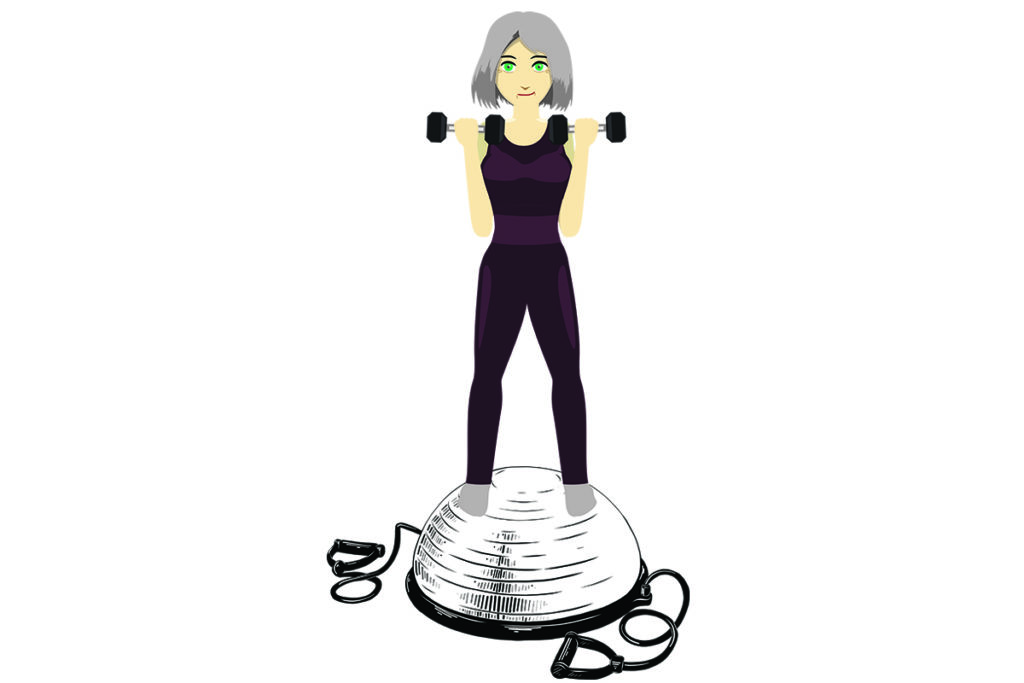Solutions for Age-Related Decline
Use exercise to limit the biological damage created by a loss of function during aging.

Did you know that age-related deceleration of movement plays a critical role in the declining health of older adults? Slowing typically begins after age 62 with a marked decrease in walking speed. It can lead to dysfunction, poor mental and physical health, a loss of independence, and a higher mortality risk. In older adults, fatal falls due to dysfunction more than doubled between 2000 and 2012, while nonfatal falls increased by 23% (Burns, Stevens & Lee 2016).
The good news is that the right kind of exercise can help you put the brakes on these declines. Micah Josephson, PhD, assistant professor at Alvernia University, who works primarily with older adults and people with Parkinson’s Disease, explains what you want to do.
Exercise Recommendations for Age-Related Slowing
Optimal exercise programming can decelerate the degenerative biology of aging. Focus on improving motor skills such as balance, coordination and agility to combat the physiological causes of age-related slowing. Power training is also important, as function happens during quick movements, like catching yourself when you fall.
Power training typically involves exercises that rely on applying force as fast as possible—based on the idea that strength plus speed equals power. Any strength training exercise can be turned into a power exercise by increasing the movement’s velocity. This may require lightening the load a little bit.
How to Progress Exercise
Progression of skill-related exercises should be based loosely on the stability and complexity elements of Gentile’s taxonomy (classification) of motor skills (Gentile 1987). (See “Arm Curl Progressions” for examples). The taxonomy’s stability elements include body stability in early progressions and body movement in later progressions. Complexity elements begin with a closed, predictive environment and progress to an open, unpredictive environment. Within these environments, tasks can be performed the same way or in a variety of ways.
Gentile’s Taxonomy and Exercise
An application of Gentile’s taxonomy in your workout can take several forms. Stability progressions should begin with a wide, stable base of support (BOS) and narrow as you become more proficient. Unstable support apparatuses, like a rocker board or BOSU® Balance Trainer, should be added after you master a narrow BOS. A dynamic (moving) BOS can be added after the narrow base has been mastered.
Complexity progressions should begin with simple exercises in a predictable setting. The exercises can be progressed by adding alternating movements or intertrial variability, then adding secondary actions. (Intertrial variability is when a movement is performed in a different manner each time, such as lining up three chairs of different heights and performing sit-to-stands in one chair after another, never going to the same one twice in a row.) Exercises can be further progressed by repeating the same progressions in an open environment. (Open skills require you to adjust to environmental changes.) The environment can be progressed by adding more unpredictable elements. This application of the overload principle creates an ongoing state of motor learning.
Contact a certified personal trainer to discover appropriate progression exercises for you.
Arm Curl Progressions
Here is an example of arm curl progressions based on the predictable part of the taxonomy. You can also progress by adding unpredictable mental or physical elements.
- wide base of support: arm curl with feet hip-width apart
- narrow base of support: reciprocal-motion arm curl in heel/toe stance
- unstable base of support: reciprocal-motion arm curl while marching on a BOSU® Balance Trainer
- dynamic (moving) base of support: arm curl while performing four-square step test
References
Burns, E.R., Stevens, J.A., & Lee, R. 2016. The direct costs of fatal and non-fatal falls among older adults—United States. Journal of Safety Research, 58, 99–103.
Gentile, A.M. 1987. Skill acquisition: Action, movement, and the neuromotor process. In J.H. Carr & R.D. Shepherd (Eds.), Movement Science: Foundations for Physical Therapy in Rehabilitation (pp. 93–154). Rockville, MD: Aspen Publishers.





